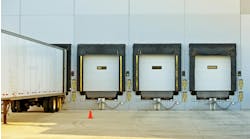Samsara upgrades fleet management system with real-time EV monitoring and routing
ORLANDO, Fla. — Not having enough battery to finish a route or make it the next charging station can ruin an electric vehicle driver’s day. For fleets using EVs, an uncharged vehicle is not making money and negating any cost benefits that come with battery-electric vehicles.
After working with its EV customers to understand their challenges in this new green world, fleet technology company Samsara developed tools for its fleet management system to help customers adapt to and streamline EV operations. These tools, which were released to all existing customers on March 3, allow fleets to get real-time looks at battery levels of their electric and hybrid vehicles, optimized route planning for EVs, along with more data and assistance to make sure fleet EVs are getting the best ROI.
“The ability to track our EV battery levels ultimately comes down to peace of mind,” said Matthew Bradley, superintendent of automotive maintenance for the City of Boston, said. Boston has been using the Samsara system to monitor and improve the efficiency of its municipal EV and hybrid fleet.
Samsara’s new EV-focused features for fleet managers include:
- Combat range anxiety with real-time charging status and alerts for complete visibility into vehicle state of charge and charging status;
- Get notified of low EV battery levels with “State of Charge” alerts to prevent “bricked” vehicles;
- Optimize EV route planning with visibility into fuel, energy levels, and nearby charging stations in order to dispatch the right vehicle with sufficient battery charge needed to complete the job;
- Measure vehicle performance to ensure that all the vehicles in your fleet—whether fuel, electric, or hybrids — are performing optimally;
- Monitor charging behaviors with visibility into EV charging history and ensure that drivers are charging at optimal hours and locations;
- Use Real-Time State of Charge Reports to control range anxiety.
With Samsara Real-Time State of Charge Reports, fleets can view current and historical vehicle State of Charge to help inform fleet dispatching and operational decisions. The system also monitors charging status to determine if vehicles are plugged in and charging.
“It’s not just a business priority for us to operate an eco-friendly fleet, it’s important to our customers as well. With the visibility Samsara provides into our EVs, we can ensure that drivers are efficiently charging their vehicles and we can actualize the benefits of going electric,” said Gary Bauer, CEO of Bauer’s Intelligent Transportation.
The Samsara system can tailor EV State of Charge Alerts for each fleet to help it prevent “bricked” — or drained battery — vehicles on the road. This alert notifies fleet operations if the charge falls below a particular custom percentage so the vehicle can be routed to the closest charging station.
Samsara said that finding those charging stations got even easier with its new features. With the EV Charge Stations Map Overlay, fleets can find nearby charging station information including open hours, available charging types, and more.
Fleets can now leverage fuel and energy usage data to help them finetune their electrification strategy and determine which vehicles are performing best across the entire fleet. This feature helps fleets stay on top energy consumption, carbon emissions, effective MPG, and the percentage of electric miles driven vs. fuel usage for plug-in hybrids to monitor the impact of an electric fleet.
The new EV features are available to all current Samsara fleet customers and the company offers a free trial to potential customers.
“Bauer’s has always pledged its commitment to the environment,” Bauer added. “But it’s not just a business priority for us to operate an eco-friendly fleet, it’s important to our customers as well. That’s what sparked our choice to start using these features within the Samsara dashboard — an effort to meet the growing demand of our clients and better support the use of EVs within our fleet. With this visibility, we can ensure that drivers are efficiently charging their vehicles and actualize the benefits of going electric”






